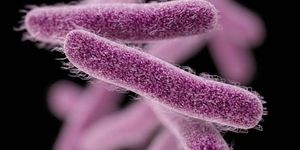Novel Imaging Technique Enables Real-time Monitoring of Drug-induced Protein-protein Interaction
Protein-protein interactions (PPIs) are a common cellular phenomenon in which two or more protein molecules have close, specific physical contact that's driven by the electrostatic forces. PIPs often result in one of the participating components being activated or repressed. Therefore, they attract a lot of interest from the biomedical and pharmaceutical community for being potential targets of intervention.
One of the methods to explore PPIs is to use fluorophore phase transition-based assays, during which fluorescent probes are induced to be released from one phase (e.g. among lipid membrane) into another (e.g. solute or cytosol). Most of these assays produce an intensely bright signal but with poor spatial resolution.
On the other hand, methods that utilize Förster resonance energy transfer, or FRET, can produce a favorable spatial resolution. The transfer of energy from the donor molecule to the receptor molecule gives out a fluorescence signal that allows better localization of PPIs. However, FRET-based approaches have low signal-over-noise ratios, making it hard to discern the difference between signals and the background.
Scientists from the University of California—San Francisco reported that they have developed with a new technique called SPPIER, or separation of phases-based protein interaction reporter gene. Their method genetically encoded a green fluorescent protein (GFP) into the gene/protein of interest. When a PPI is induced (by potential therapeutics), SPPIER rapidly forms droplets that contain a large amount of GFP.
In one of their proof-of-concept test, the researchers tested the technique on a PPI induced by IMiDs an immunomodulatory drug. The interaction between cereblon and Ikaros can lead to the degradation of the latter. SPPIER was able to allow scientists to image the PPI with high resolution and decent signal-to-noise ratio. Similar results were also observed in a few other PPIs.
The UCSF group hope that their fluorophore phase transition based assay can be applied in high-throughput screening, considering its "large fluorescence change, high brightness, and easily recognizable signal pattern".
Their work was published in the journal Analytical Chemistry.
Source: ACS via Youtube








